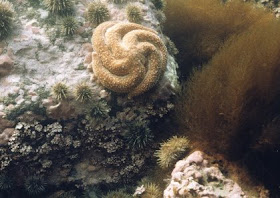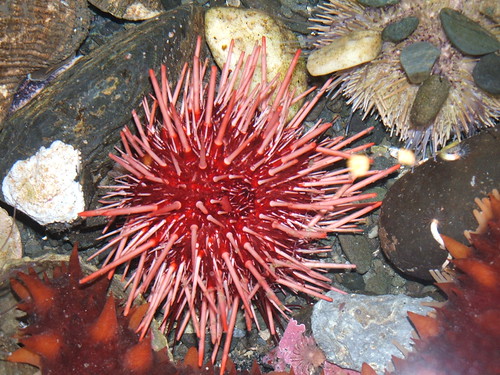This week I blog from beautiful, historical Monterey, California where I am attending the Marine Image Analysis Workshop hosted by the Monterey Bay Aquarium Research Institute and the Seamount division of the Census of Marine Life (CENSEAM).
 So what brings nearly 100 of the world's taxonomic, oceanographic, ecological, and other deep-sea scientists together like this?
So what brings nearly 100 of the world's taxonomic, oceanographic, ecological, and other deep-sea scientists together like this? Its like this: Global exploration of the deep-sea has expanded and MANY oceanographic, marine resource organizations, and academic institutions have stepped up their usage of video cameras, submersibles and other devices, such that there is a HUGE quantity of high quality video from various surveys and so forth.
Its like this: Global exploration of the deep-sea has expanded and MANY oceanographic, marine resource organizations, and academic institutions have stepped up their usage of video cameras, submersibles and other devices, such that there is a HUGE quantity of high quality video from various surveys and so forth.For example:
 The MBARI video collection ALONE includes
The MBARI video collection ALONE includes- over 16,000 HOURS of video footage (in standard AND high def!!)
- over 3 MILLION individual observation/notations made since the database began in 1988
So, as part of an effort to recognize the various multitudes of organisms that deep-sea biologists from SEVENTEEN countries have been observing, they have attended this workshop featuring ELEVEN of the world's foremost taxonomic experts on different deep-sea animal groups!!
For example, here we see Dr. Henry Reiswig (from Canada), one of the world's experts on glass sponges (Hexactinellida), expounding on how to identify his favorite animals to an attentive audience...
 There are three solid days of workshop.
There are three solid days of workshop.Day 1 (today-Monday) included sponge presentations by Dr. Reiswig and Dr. Bill Austin we also saw some awesome talks on deep-sea fishes by fish biologist/ecologist Greg Cailliet from Moss Landing Marine Labs, Bob Lea formerly of the National Marine Fisheries, and Tomio Iwamoto, curator of fishes at the California Academy of Sciences.
 The oral sessions are followed by workshops headed up by the experts, who then proceed to assist in identifications of picture files and discuss the animals. Think of it as sort of "Antiques Roadshow" style...but instead of someone who discusses old antique chairs..its your latest pictures of deep-sea zoarcid fishes!
The oral sessions are followed by workshops headed up by the experts, who then proceed to assist in identifications of picture files and discuss the animals. Think of it as sort of "Antiques Roadshow" style...but instead of someone who discusses old antique chairs..its your latest pictures of deep-sea zoarcid fishes!"Video Taxonomy" is a whole different kettle of fish relative to what most people might be used to when trying to identify the species for a physical specimen. For one thing, there's far MORE video collected then if specimens alone were collected
 Observations are annotated and noted on a video notation system. This gives us a whole new dynamic of information (sometimes instead of or in addition to a specimen)...
Observations are annotated and noted on a video notation system. This gives us a whole new dynamic of information (sometimes instead of or in addition to a specimen)... You can have documentation of something that was DIRECTLY happening vs. a preserved or dead specimen... but also (from the opening address):
You can have documentation of something that was DIRECTLY happening vs. a preserved or dead specimen... but also (from the opening address):- We see the INTACT animal (not often the case in the trawl or otherwise poorly collected animal)
- We quickly discover expanded and accurate bathymetric and other data.
- We can directly observe the habitat associated with the critter
- You can often discover NEW species!
- You can observe BEHAVIOR which wasn't something you could before
- You can observe the organism's interactions with the enviornment

(Strongylocentrotus fragilis from MBARI)
My presentation & all of the echinoderm talks is Tuesday!!!






































